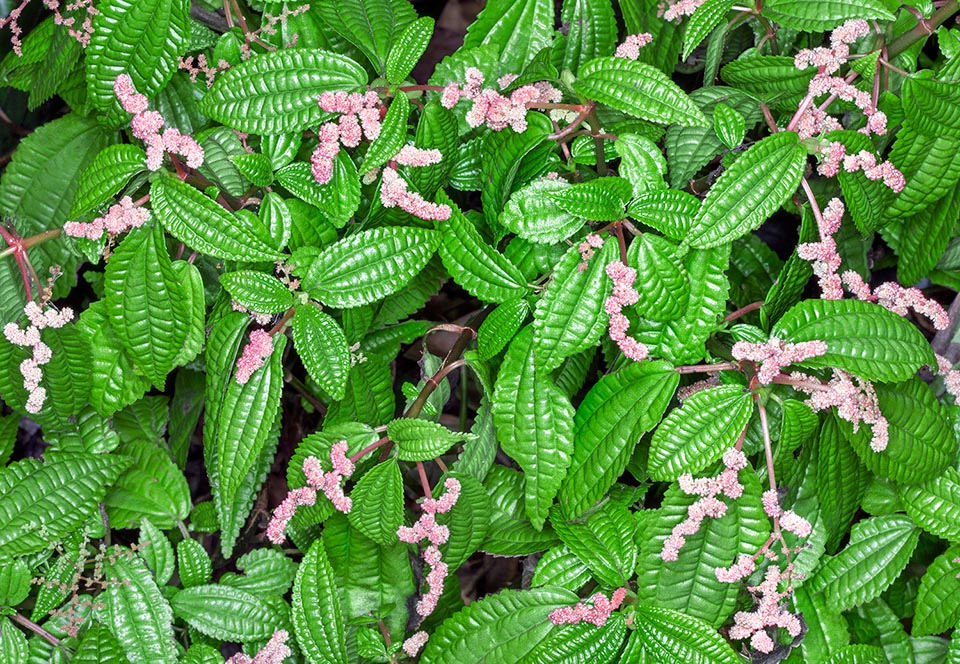Family : Urticaceae

Text © Pietro Puccio

English translation by Mario Beltramini
The species is endemic to Jamaica where it lives in the under-wood of the humid forests, where is often the dominant species, on calcareous rocks up to about 2300 m of altitude.
The name of the genus comes from the Latin substantive “pileus, i” = cap, felt cap worn by the Romans during the feasts and the banquets by the freed slaves, with reference to to the calyx shaped like a hood covering partially the female flower and the fruit. The name of the species is the combination of the Latin adjective “grandis, e” big and of the substantive “folium, ii” = leaf, with obvious reference.
Common names: alligator pilea, Jamaica pilea, maroon bush (English).
The Pilea grandifolia Blume (1856) is an herbaceous or semi-shrubby perennial species, evergreen, non-irritating, 0,3-1,5 m tall, with green fragile stems and stipules (appendages having the purpose of protecting the leaf during the initial phase of growth), caducous, 2 cm long. The leaves, on a 1,6 cm long petiole, are simple, opposite, ovate with acute apex, crenate-serrate margin and bullate surface with 3 prominent veins, 4-20 cm long and 2,5-10 cm broad, rather fleshy, of green (more frequently) to green with bronze shades colour, glossy.

Pilea grandifolia is endemic to Jamaica. In the underwood of the humid forests is often the dominant herbaceous species. Born for the tropics, it also grows in interiors © Giuseppe Mazza
Inflorescences, on a 2-12 cm long peduncle, axillar, ramified, 3-10 cm long, bearing numerous tiny sessile unisexual flowers, of more or less intense pink colour; the fruits are ovoid sessile achenes. It reproduces by seed, but usually and easily recourse is done to the cutting.
Species appreciated for the foliage, in particular the varieties with more or less bronze shades, whilst the ‘Coral’, utilizable as soil cover and for borders in the gardens of the tropical and subtropical climate zones, not bearing temperatures close to the 0 °C, in semi-shady to shady position. Requires porous and draining soils, preferably acidic to neutral, rich of organic substance, maintained almost constantly humid, but without stagnations that might cause rottenness.
For its characteristics is suitable to be cultivated in pot for the decoration of inner spaces, terraria, greenhouses and winter gardens, with lowest minimal temperatures not under the 16 °C, in luminous position, but not in direct sun. If the environmental humidity is low the pot can be put on a wide saucer filled up with expanded clay or rubble with a layer of water, not in direct contact with the bottom of the pot, in way to create a humid micro environment around the plant.
→ To appreciate the biodiversity within URTICACEAE family please click here.
